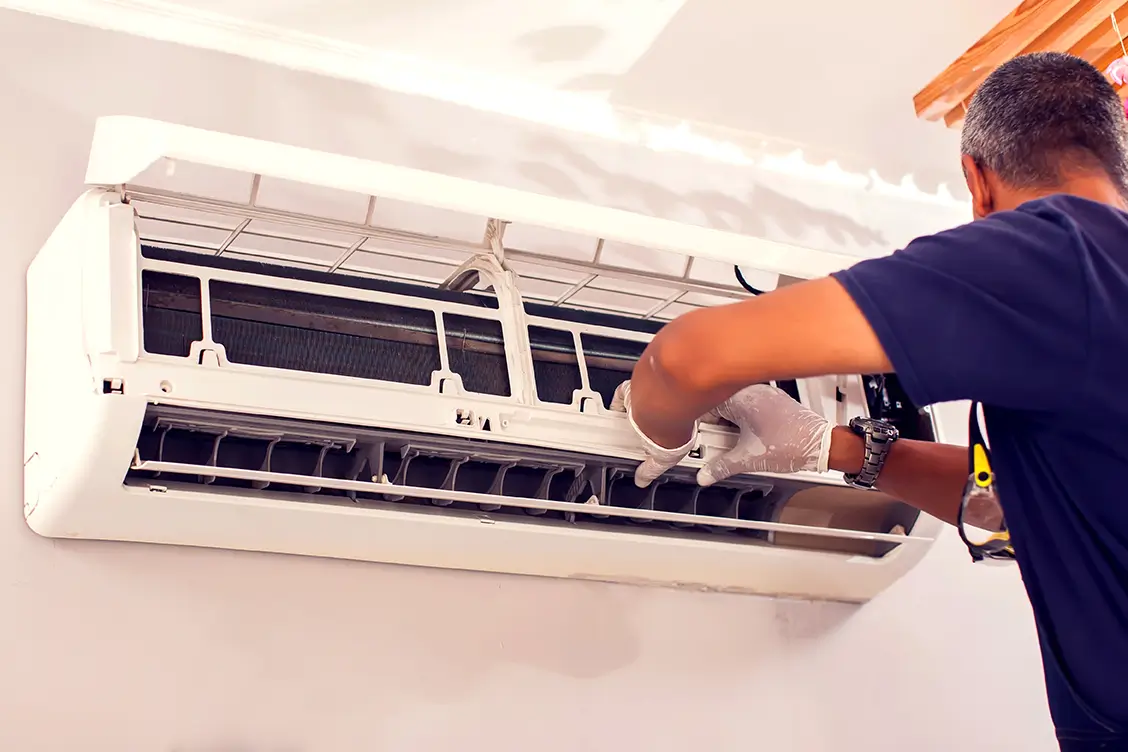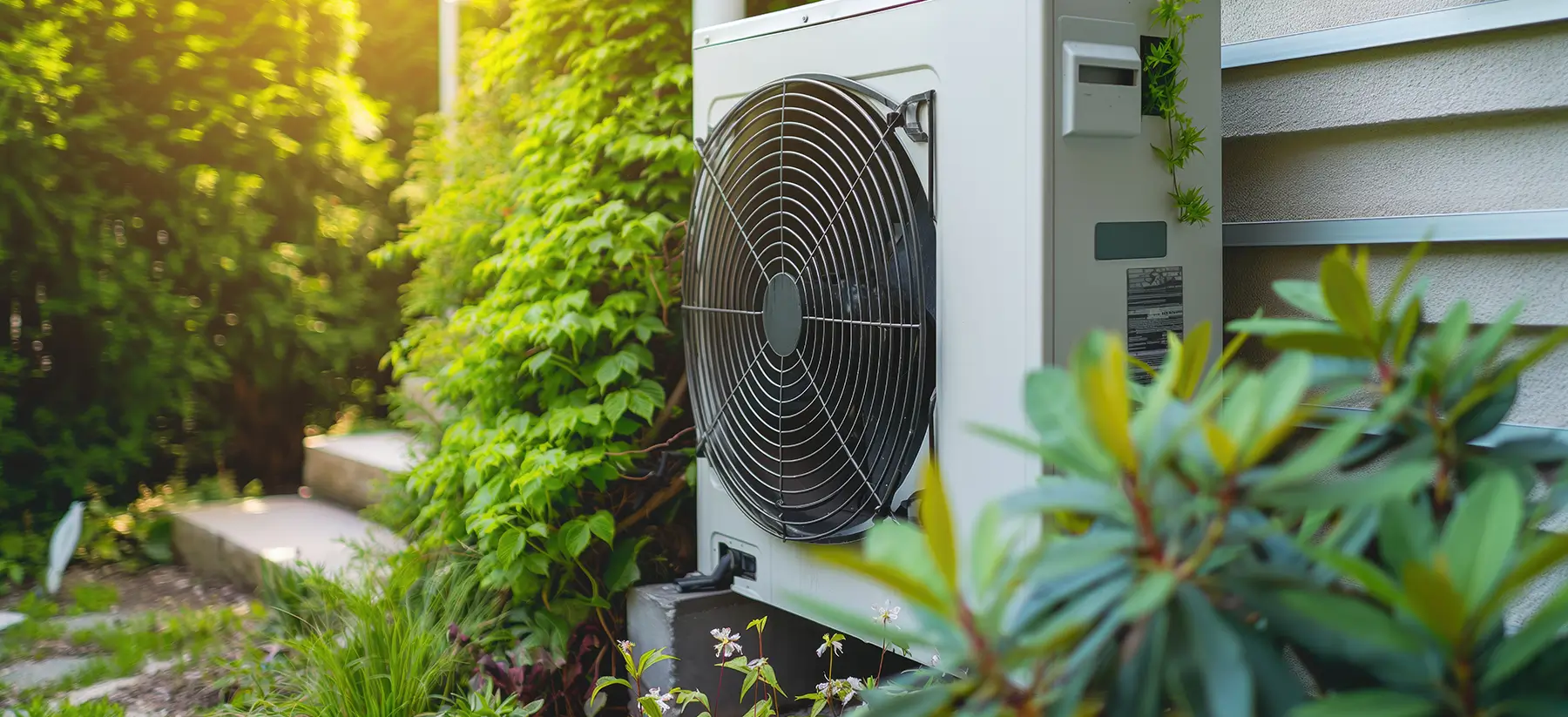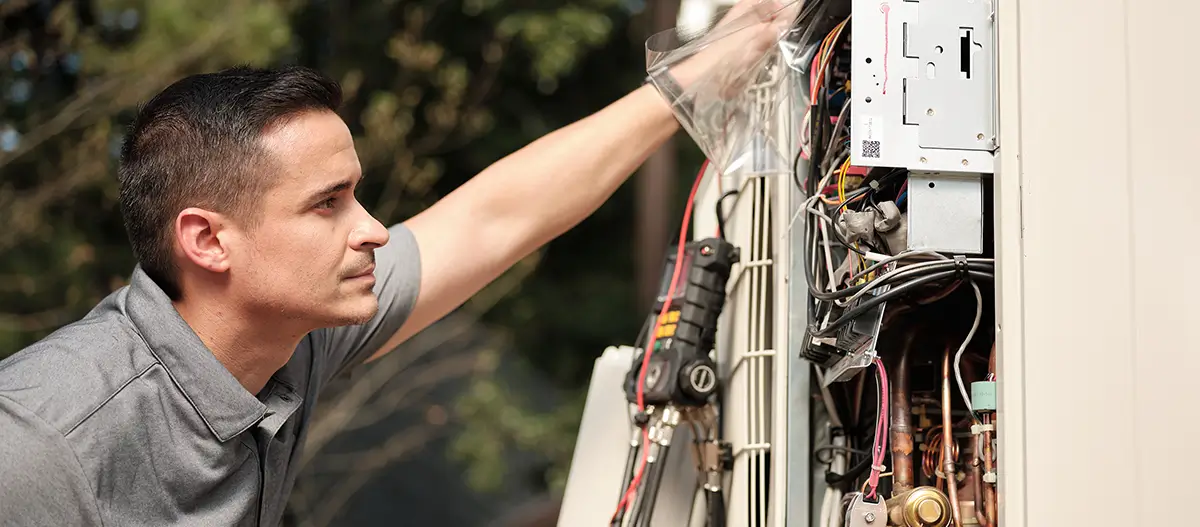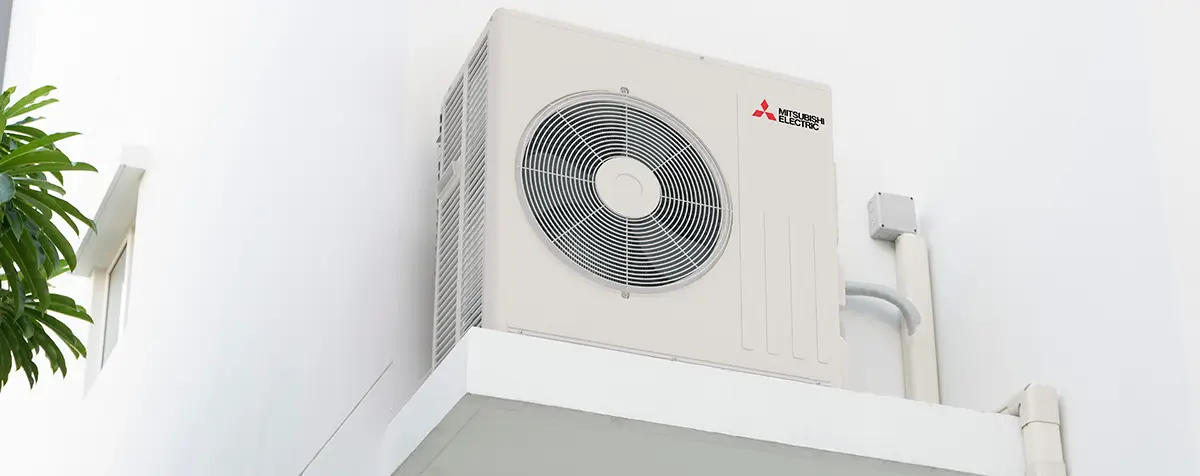In the evolving home heating and cooling landscape, mini-split systems have become a cornerstone of comfort and efficiency. Unlike traditional HVAC systems, mini-splits offer a unique blend of flexibility and energy savings, making them an increasingly popular choice among homeowners. However, as with sophisticated equipment, a mini-split system requires regular maintenance to operate at its best. Neglecting this critical aspect can lead to decreased efficiency, higher energy costs, and a shortened lifespan for your system.
Seasonal maintenance of your mini-split system is not just about preventing breakdowns; it’s about optimizing its performance to suit the changing needs of each season. From the pollen-filled breezes of spring to the icy touch of winter, each season brings unique challenges and opportunities to enhance the efficiency and effectiveness of your mini-split system.
This guide is designed to provide homeowners with a seasonal checklist for maintaining their mini-split systems. By following these tips, you can ensure that your system offers comfortable, efficient heating and cooling all year round while prolonging its life and minimizing the risk of unexpected repairs. Whether basking in the summer heat or cozying up during the winter chill, a well-maintained mini-split system is your ticket to year-round comfort.
Table of Contents
Spring Maintenance: Preparing for Warmth
As the chill of winter fades and the first signs of spring emerge, it’s time to prepare your mini-split system for the warmer months ahead. Spring maintenance is crucial to ensure your system operates efficiently during the peak cooling season. Here are essential steps to include in your spring maintenance checklist:
Clean or Replace Air Filters:
The air filters in your mini-split system are crucial in maintaining indoor air quality and ensuring efficient operation. Over the winter months, filters can become clogged with dust, pet dander, and other particles. Begin your spring maintenance by cleaning the filters or replacing them if necessary. This simple step can significantly improve the efficiency of your system and the quality of your indoor air.
Inspect the Condenser Unit:
During the fall and winter, debris, leaves, and dirt can accumulate in the outdoor condenser unit. Inspect the unit for obstructions that could impede airflow and remove debris around it. Also, check for any visible signs of damage or wear that may need professional attention.
Test the System:
Please turn on your mini-split system before the weather gets too warm to ensure it’s cooling effectively. Listen for any unusual noises and monitor the system for a few hours for consistent performance. This early test run can help identify any issues that must be addressed before peak cooling season.
Professional Inspection:
While homeowners can handle many aspects of mini-split maintenance, a professional inspection ensures your system is in top condition. A certified HVAC technician can comprehensively check your mini-split system, including refrigerant levels, electrical connections, and overall system performance. Scheduling a professional inspection in the spring ensures any issues are fixed before you rely on your system during the summer months.
Spring maintenance is not just about preparing your mini-split system for the upcoming heat; it’s also an opportunity to enhance the system’s efficiency and longevity. These steps ensure your mini-split system is ready to provide comfortable, efficient cooling throughout the warmer months.
Summer Upkeep: Ensuring Efficiency During Peak Use
Summer is when your mini-split system works the hardest, providing essential cooling to keep your home comfortable during the hottest months. High temperatures and increased usage demand that your system operates at peak efficiency. Here’s how you can ensure it does just that:
Regularly Clean Air Filters:
Given the increased usage during summer, air filters can quickly accumulate dust and debris, reducing airflow and efficiency. Check and clean the filters at least once a month or more often if you have pets or live in a dusty area. This simple task can significantly impact your system’s performance and indoor air quality.
Maintain Clear Surroundings:
Obstructions and debris can drastically affect your outdoor unit’s efficiency. Ensure that the area around the unit remains clear of foliage, garden equipment, and debris. A clear space of at least 2 feet around the unit allows optimal airflow and efficiency.
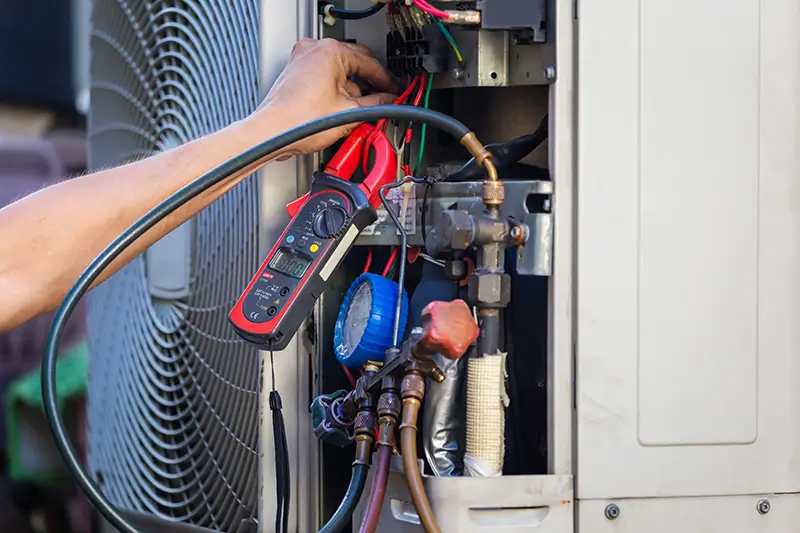
Check for Leaks:
Refrigerant leaks reduce the efficiency of your mini-split system and can cause environmental harm and lead to costly repairs. Regularly inspect the refrigerant lines for signs of leaks, such as oil spots or ice formation. If you suspect a refrigerant leak, contact a professional immediately to address the issue.
Energy Efficiency Tips:
Optimize your mini-split system’s energy usage by setting it to an eco-friendly temperature. While setting the temperature very low might be tempting, maintaining a comfortable yet moderate indoor temperature can lead to significant energy savings. Utilizing ceiling fans to circulate air can also enhance cooling efficiency, allowing you to set the mini-split system at a higher temperature without compromising comfort.
System Checkup:
Mid-summer is an excellent time to assess your system’s performance. Is it cooling all areas of your home evenly? Have your energy bills increased unexpectedly? A mid-season checkup can help identify issues early, preventing more significant problems.
Professional Support:
If you haven’t yet needed a professional inspection in the spring, consider scheduling one during the summer months, especially if you notice any system performance issues. Professional maintenance can address complex problems, ensure your system is charged correctly with refrigerant, and ensure that all components function optimally.
Summer maintenance ensures your mini-split system can handle the season’s demands efficiently. By following these tips, you can enjoy a more relaxed home environment, reduce energy consumption, and prevent mid-season breakdowns, ensuring your mini-split system continues running smoothly throughout the peak of summer.
Fall Preparations: Getting Ready for the Cold
As the vibrant leaves of fall begin to drop, it’s a reminder that colder weather is on its way and, with it, the shift from cooling to heating. Preparing your mini-split system for the winter months during the fall ensures it will efficiently and reliably keep you warm. Here are the essential steps for fall maintenance:
Deep Cleaning:
After summer use, your mini-split system will benefit from a thorough cleaning. This includes cleaning or replacing the air filters, wiping down the exterior of the indoor units, and ensuring the outdoor unit is free from accumulated debris, leaves, and dirt. A deep clean enhances air quality and system efficiency.
Preparing the Outdoor Unit:
Fall is the perfect time to inspect the outdoor unit for any damage and to cover any exposed pipes with insulation sleeves to protect them from freezing temperatures. While covering the entire outdoor unit isn’t recommended due to airflow restrictions, protecting the components from falling leaves and snow can prevent blockages and ice formation.
Sealing and Insulation Checks:
To maximize your mini-split system’s efficiency during the winter, check the seals around windows and doors for leaks and consider additional insulation if necessary. Preventing cold air from entering and warm air from escaping can significantly reduce heating demands on your system.
System Test:
Before the chill sets in, please turn on the heating function of your mini-split system to ensure it’s working correctly. Listen for any unusual sounds and monitor the system for consistent performance. Identifying and addressing any issues early can prevent problems when you need your system the most.
Professional Inspection:
If not done earlier in the year, scheduling a professional inspection in the fall can be particularly beneficial. A technician can perform a detailed check of the heating components of your mini-split system, ensuring it’s ready to operate efficiently throughout the winter.
By conducting these fall maintenance tasks, you prepare your mini-split system to face the winter most efficiently and effectively. This proactive approach not only ensures your comfort during the colder months but also helps extend the lifespan of your system, ensuring it serves you well for years to come.
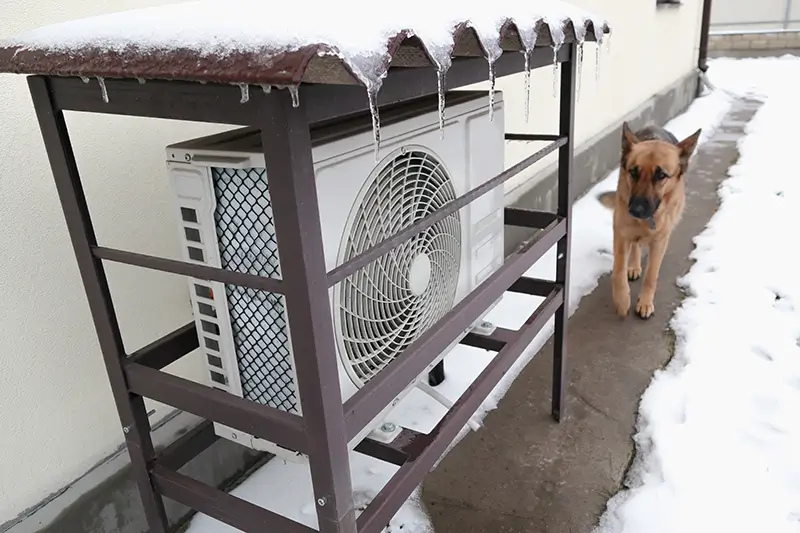
Winter Care: Maintaining Warmth and Efficiency
Winter presents unique challenges for maintaining your mini-split system, as the cold weather demands consistent and efficient heating to keep your home comfortable. Here are essential tips for winter maintenance to ensure your system operates smoothly throughout the cold season:
Snow and Ice Removal:
Keep the outdoor unit clear of snow and ice. Snow or ice accumulation can block airflow and reduce the efficiency of your system. Gently remove snow around the unit and use a soft brush to clear any snow or ice that may have formed on it. Avoid using sharp objects that could damage the unit.
Regular Filter Checks:
During winter, indoor air quality can diminish when homes are typically sealed up to keep the cold out. Regularly check and clean the air filters to ensure efficient operation and maintain healthy indoor air quality. This is especially important in winter when the system consistently recirculates indoor air.
Monitor Performance:
Pay attention to how well your system is heating your home. If you notice certain areas are not getting warm or the system seems to be working harder to maintain comfortable temperatures, it could indicate an issue, such as a refrigerant leak or a problem with the outdoor unit. Early detection can prevent more significant issues later in the season.
Emergency Numbers:
Have the contact information of a reliable HVAC professional readily available. If your system stops working during a cold spell, having quick access to professional help can prevent a minor issue from becoming a significant inconvenience.
Protect Outdoor Units:
Ensure the outdoor unit is not directly exposed to dripping water that can freeze and cause ice buildup. This includes checking for leaks in gutters and downspouts that may lead to ice formation around the unit.
Maximize Efficiency:
Utilize your mini-split system’s features to maximize efficiency. Many systems have a “defrost mode” designed to prevent ice buildup on the outdoor unit in cold temperatures. Familiarize yourself with your system’s specific features and use them to enhance performance and efficiency during the winter months.
Winter maintenance for your mini-split system ensures it can reliably and efficiently keep your home warm, even on the coldest days. By following these tips, you help safeguard your system against winter’s challenges, ensuring a warm, comfortable home while potentially extending the life of your system.
Summary
In conclusion, maintaining your mini-split system through seasonal and year-round care is essential for ensuring efficient operation, optimal performance, and extended lifespan of your system. By following the detailed seasonal checklists and embracing the principles of year-round maintenance, homeowners can prevent common issues and enjoy comfortable indoor temperatures regardless of the season. Remember, while many maintenance tasks can be handled personally, don’t hesitate to consult with a professional for more complex issues or regular inspections. Taking proactive care of your mini-split system will create a more energy-efficient, comfortable, and healthy home environment.

